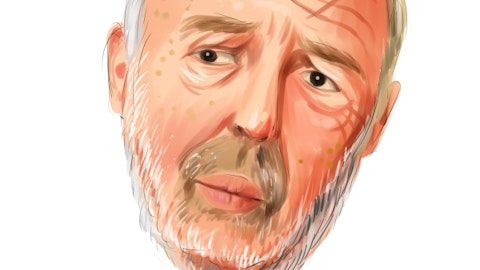Let’s say, you have a technician, a guy that is a technician today. Until we became a corporation, he could only be an engineer if they had applied for a job once again. But now we can do that transition or the relocation and as any other company does. So first of all, we will try to unify our processes, technologies, and we will gain efficiencies what we can use internally as services. We can unify contracts, we can have gains of scale. And the third aspect is that once you can relocate people internally because they are already here, they are already familiar with the culture of the company. They are prepared. So, if we can do that, you won’t need to replace too many people. And bearing some strategic things, we’ve been saying that despite the excellent work being done by [indiscernible] and Bertol and by the entire team working in the commercialization area.
We also see here great opportunities to improve our commercialization. And also, it’s an opportunity for us to have a better structured sales force in other markets closer to customers, meaning that we can open new markets. COPEL is amongst the three major companies in terms of commercializing energy. But again, in terms of commercialization, this relationship with the market and the fact that we can now have a better view of what the retail market needs, gives us great opportunities for the company. In terms of energy planning, organization and in terms of having this more integrated view today with the teams that we have, we are well served, and we are, no doubt, one of the major references in this industry.
Gustavo Faria: Perfect. Thank you very much.
Operator: Our next question is from Giuliano Ajeje from UBS. Giuliano, your microphone is on.
Giuliano Ajeje: Great, thanks. Good morning. It’s always a pleasure to talk to you. I have a few questions. And Daniel, I don’t want to jump again in terms of your COPEL Day, but I have two questions. First of all, what do you think would be a leverage limit where you wouldn’t have your grades downgraded? What will be the cap of this leverage? Could we work with the scenario where you would pay out more dividends? And my second question refers to something quite interesting, since the last power outage, is the PLD intraday which is reflecting into mid-term prices. Are you feeling that increase in prices and then probably this could impact [indiscernible] further on?
Daniel Slaviero: Okay. Perfect. Well, certainly, we will give you more details during our COPEL Day. But let me start with the second part of your question, which is what happened here in August, September and this volatility. Be it due to the increase in temperature or be it through restrictions and distribution, this makes us remember something of you as low prices have been around for quite some time, people forget the energy prices are very volatile, and prices will not remain low for many years to come. This is unthinkable. And this intraday volatility also shows that the intermittent forces, even though they are very important for the interconnected system has some fragilities. And since we have a very strong base as it happens with other companies, and we do believe in this feature, we believe that this should be valid in the mid and long range.
If your role is to generate power, provide power in a uniform way throughout the day, I mean, the TPPs also have that function, but it’s cheaper. They will be recognized. And in our view, I mean, it’s exactly what you said. Throughout the day, if you have self-consumption and high load at the end of the day, and there is no sunshine that will be difficult, if the wind blows faster at dawn. These are all things that should have been happening since 2021 when we due to the hourly price. And I think we should have priced that better in a contract. But as there was a water crisis, the price hit the ceiling and there was a perfect storm of rainfall load at the end of the subsidy and it went to the floor. Now we are beginning to see the first signs of what is happening.
And just to conclude, and I’ll link that to your question, and then I’ll turn the floor to you and Moura to talk about price variation and PLD by price variation. I mean, all that shows that there will be a lot of volatility. The trend is towards price volatility, not in the long run, but if you have this intraday. So having a safer leverage, leaving some room available, this has proven to be something quite interesting. What we’ve been saying to the market, I mean, that 2.5x leverage is what we believe to be adequate to date. And I would say that even in the short run, maybe just the end of next year and early 2025, this is pretty much what we have seen in terms of our leverage because our covenant is 3.5. But now we are a private company.
And with excellent execution, great efficiency and technical capacity and our capacity to generate cash, some eventual debate about what would be the ideal leverage, this is something for the midrange. This involves a more complex debate that has to be discussed at length. And also, this would have to be negotiated according to the covenant limit, which today fall at 3.5. Regardless of this reality and the fact that it may not change in the short run, our dividend policy is very clear. We have always focused on a payout aiming at 50%. But if there is no investment perspective, if there is nothing that comes along, we could also have a higher payout. We had last year, 80% payout. As you know, this is something that we will have to discuss at length during the next cycle.



